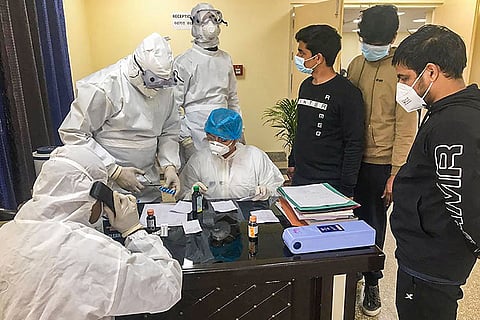

86,900 cases of coronavirus disease have been reported across the world as of Sunday morning, with the death toll mounting to 2,978. Strict travel advisories and guidelines have been issued by authorities worldwide following the World Health Organisation’s (WHO) declaration of the outbreak as a ‘Public Health Emergency of International Concern’ (PHEIC).
One measure taken by health officials around the world is the decision to place individuals at risk of developing the disease under home quarantine. So what exactly is home quarantine and how is it done?
The idea behind home quarantine is to identify individuals who are deemed to be at a high risk of developing the disease and isolating them in an effort to curb the spread of the virus to others in the community. While the United States Center for Diseases Control and Prevention (CDC) recommends a 14-day quarantine period for those individuals who have recently returned from visiting any country which has reported a positive case of covid19, India had issued a 28-day quarantine period.
Scores of individuals are currently under home quarantine across the country. These individuals are required to confine themselves in their homes and limit their contact with others for a period of 28 days. During this time, they cannot leave their homes and it is advised that they separate themselves in a single room, in an effort to limit their contact with others at home. Routine monitoring of temperature is done and health officials visit the individual frequently to monitor their progress. Throat swabs are taken and sent to labs for testing routinely during the quarantine period.
The individual may begin to show signs of an infection and they are shifted to a hospital for observation and treatment and lab tests will be awaited to see if they are positive for the virus.
Regardless of whether they show symptoms, if an individual’s samples return positive, they will be taken to a hospital for further treatment.
What if someone is under home quarantine, but their first few samples return negative? In that case, the individual must continue and complete the full 28-day home quarantine period to ensure that there is no risk of them developing and/or spreading the infection.
According to a press release from the Ministry of Health and Family Welfare on February 27, “as many as 4,82,927 passengers have been screened from 4,787 flights as on date.” It further reads that screening has been done at 21 airports, 12 major seaports and 65 minor seaports and land crossings. Over 23,500 individuals are under community surveillance.